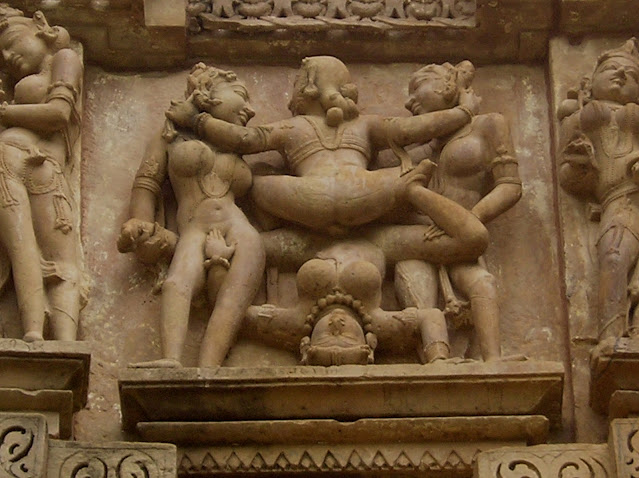 |
| Khajuraho Vishvanath Temple |
Vira Chandra: Much of what is now called “Hinduism” bears only a faint resemblance to the radiant Sanatana Dharma that once flourished across the Indian subcontinent.
Today, rituals are often mechanical. Priests mumble mantras they barely understand. Temple visits become noisy spectacles, stripped of inner silence. The average practitioner is often more focused on fear, social status, or superstition than on realization or surrender. In many places, Hinduism has become a brittle shell—a surface religion clinging to forms whose inner fire has been forgotten.
But this was not always the case.
In early Vedic times, the Dharma was alive with mystery, power, and grace. The varna system—now synonymous with rigid caste—was originally a fluid framework based on one’s qualities (guna) and actions (karma), not birth. Some of the greatest sages and mystics came from humble or non-Brahmin backgrounds—like Vyasa, born of a fisherwoman; Valmiki, a former bandit; or the great bhaktas and tantrikas who broke every social boundary to walk with God.
Women, too, were honored as seekers and seers. Rishikas like Gargi and Maitreyi engaged in metaphysical debate with kings and sages. Lopamudra, the wife of Agastya, composed hymns still preserved in the Rig Veda. Women had the right to perform rituals, chant mantras, and pursue Self-realization without apology. Their presence wasn’t a token inclusion—it was integral to the sacred rhythm of the culture.
And the temples—those sacred stone books—remember.
The iconography of ancient India speaks more honestly than any modern pundit or textbook. Temples like Khajuraho, Chidambaram, and those in ancient Kashmir reveal a grandeur and fearlessness that are hard to imagine today. Their carvings integrate sexuality, power, devotion, transcendence, and metaphysical symbolism into a seamless whole. The erotic is not profane, the sacred is not prudish, and the body is not divorced from the Self. Every figure, every gesture, every curve is a mudra of truth, encoded in stone by those who knew.
So what happened?
Two thousand years of distortion. The decline of the Vedic vision. The rise of rigid Smriti-based orthodoxy. The good intentions—but also unintended consequences—of reformers like Adi Shankaracharya, who sought unity through abstraction but often eclipsed the fire of embodied ritual and devotion. The absorption of local folk cults—many rich in power and beauty, yet others burdened with superstition—into the mainstream. The invasions. The humiliations. The waves of Islamic conquest. The brutal erasure of temples, the breaking of murtis, the silencing of shastras. The colonial centuries, where even the last embers were mocked and buried beneath foreign judgment and Victorian puritanism.
And through it all—somehow—the Dharma survived. But not unscathed.
What remains today is often a confused mosaic. Ostentatious puritanism sits side by side with hidden licentiousness. Hollow rituals coexist with deep but private faith. Superstition thrives while the deepest teachings of non-duality, bhakti, and tantra remain sealed away, rarely understood even by those who inherit them.
Yes, it’s easy to feel bitter. But bitterness, if honest, is only another face of longing. And behind that longing is love.
For those of us who have tasted the wild beauty of Nityananda’s silence… the piercing cry of Ramakrishna’s yearning… the diamond clarity of Ramana’s gaze… the fire of Mirabai and Chaitanya… the grace of the Devi Herself — We know what Dharma can be.
The Shakti is not dead. She hides. She watches. She flows through unexpected places: an obscure temple in a forgotten village, a line from a saint’s poem, the eyes of a stranger, the silence of a mountain, a moment of deep surrender. And sometimes, She moves through a song that finds you on YouTube at just the right time, a line in a Facebook post that pierces your heart, a meme that carries unexpected grace, or even a comment beneath a video that feels like it was written just for you. She no longer waits only in the forest or the shrine—She adapts, She flows, She speaks wherever the heart is open enough to hear.
What we call “Hinduism” today may be a shadow. But the Light that cast that shadow still shines.
And if you look with love—not just criticism—you’ll find Her again.











No comments:
Post a Comment